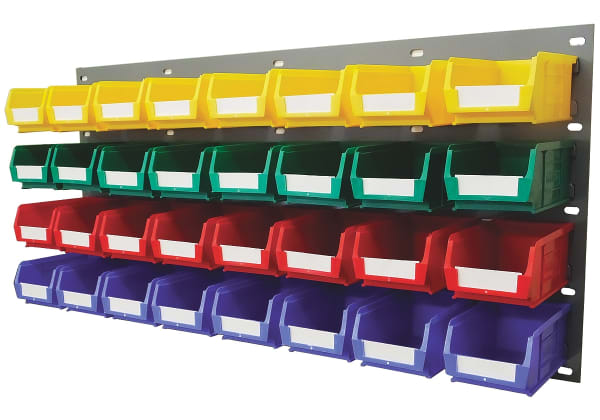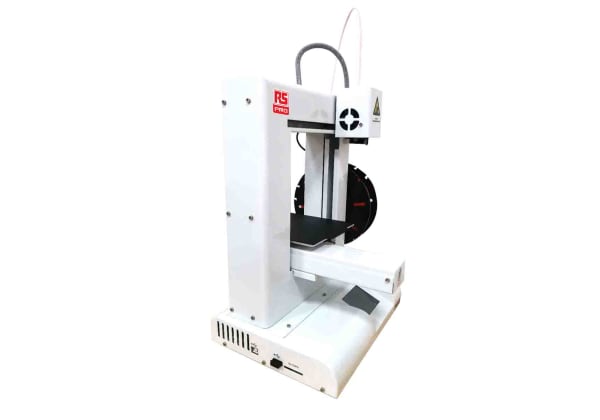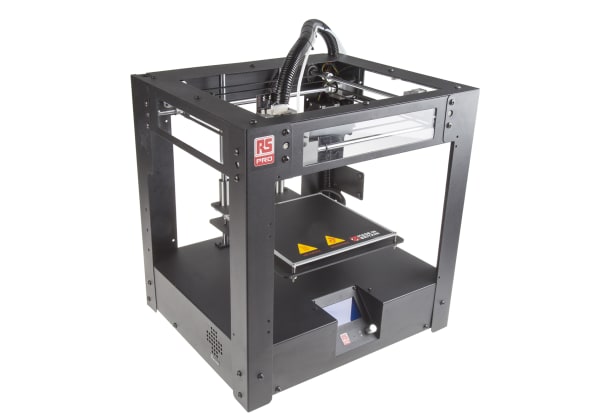- Published 16 Feb 2024
- Last Modified 12 Apr 2024
- 6 min
3D Printing and Spare Parts Management
Spare parts management is about balancing costs and supply efficiencies, both of which 3D printing can improve. Find out how in this article.

Reviewed by Peter Kendall, Technical Support Engineer (February 2024)
Additive manufacturing gives enormous freedom for making complex shapes in small quantities at affordable prices. This naturally offers opportunities for spare parts management systems. By 3D printing spare parts, you can lower lead times, reduce inventory costs, better control your supply chain, and get machinery operational more quickly. Read on to learn more about these benefits, 3D printing challenges, and how 3D printing can change the spare parts industry.
What Can You Print With a 3D Printer?
A small selection of 3D-printable parts includes:
- Brackets optimised for strength and weight
- Plumbing fittings and adaptors
- Gears and pinions
- Grab handles
- Hinges
- Jigs or fixtures for producing parts with traditional manufacturing
Once you start 3D printing spare parts, your biggest constraint may be your imagination. Consider your product inventory needs with the capabilities of available 3D printers and their materials to see where these technologies can work for you.
How Might 3D Printing Change the Spare Parts Industry?
All manufacturing industries rely on spare parts, and they’ve all seen massive changes in the shift to 3D printing spare parts.
Scanning: Older machines that need long-discontinued parts can keep operating through 3D printing & scanning. 3D scanners can make a digital version of an existing part to then reproduce using 3D printers. This has applications for older industrial machinery, transit fleets of older vehicles, and classic car hobbyists. 3D scanning can also reproduce parts that would otherwise need expensive casting moulds.
Stock management: With 3D printing, you can shift to digital inventory (3D models stored on servers) and simplify your spare parts management system. This reduces your costs for physical inventory storage. 3D printing can also synchronise with other inventory management techniques like computerised maintenance management systems (CMMS), which automatically order product inventory based on demand.
Faster, smaller orders: 3D printing enables rapidly faster production times and makes smaller batches more economical. This improves the costs, customisability, and lead times of orders.
Versatility: 3D printing can make shapes and features that are otherwise exceedingly expensive, or even impossible, to produce with traditional manufacturing. This can mean creative ways to restore life to machines.
Benefits of 3D Printing on Spare Parts Stock Management
On-Demand Supply
Any business paying for warehouse upkeep knows the importance of spare parts management. By 3D printing spare parts, you can seize more control of this:
- Produce parts in-house: If you invest in your own 3D printers you can avoid relying on other parties for your product inventory
- Reduce stock levels: With 3D printing’s quick turnaround times, you gain the freedom to produce parts closer to when you need them. This means spending capital on parts based on actual orders rather than filling safety stocks, which may not sell. 3D printing quickly replenishes product inventory, and given its affordable small batches you can reduce your stock levels — or even eliminate them if you can practically wait for fresh prints
- Fix machines faster: Since 3D printing shortens time-to-market for new designs, 3D printing spare parts can quickly get equipment operational by reducing wait times for complex parts, or even enabling part designs not previously feasible
Cost-Effectiveness
3D printing spare parts offers the following cost savings:
- Reduced waste: Additive manufacturing wastes almost no material, whereas traditional manufacturing primarily cuts material away. This produces shavings to clean up, generates heat, and represents losses on material purchases
- Fewer materials: With minimal 3D printing raw materials stored, or even just one, you can produce a large assortment of parts. 3D printing materials also don’t need long storage racks, nor forklifts, cranes, saws, or their operators for setups
- Fewer operations: A sub-assembly that might require multiple parts, fasteners, seals, and lubricants could instead be one single-material part. This means a shorter parts list, fewer machining operations and operators, and less production time
- Less weight: 3D-printed parts are often lighter than those made from industrial metals. Lighter parts mean savings on transportation and reduced safety concerns
Faster Production
Machining individual parts using traditional manufacturing can take multiple machines, operating staff, setups, cutting tools, and suppliers. 3D printing production parts can cut all of these multiples down to usually just one. This can reduce product inventory lead times from weeks or months to just days, reducing your spare parts management costs.
When you no longer get into jams locating elusive parts under tight timelines, you can get machinery operational faster, improve customer satisfaction, and take on more work. You’ll also rely less on different manufacturing machines, potentially letting you divest of them.
Challenges of 3D Printing and Spare Parts Stock Management
3D printing replacement parts doesn’t come without challenges. The greatest of these concerns intellectual property. Since 3D printing and scanning gives individuals and companies the ability (though not necessarily the legal or ethical right) to reproduce other companies’ parts without regarding patents, copyrighted drawings, industry standards, or even international borders, there are still legal concerns to sort out in 3D printing. Therefore, it is important to proactively defend your own intellectual property and carefully consider other businesses’ rights when you 3D-print parts.
Strong cybersecurity will be essential for your intellectual property protection. As your spare parts management system shifts from physical shelves to 3D model files, you’ll need secure storage systems like product lifecycle management (PLM) that can interface with CAD programs.
Don’t assume perfect, repeatable quality for 3D-printed product inventory, nor infinitely possible designs. 3D printers have their own nuances for doable designs, material suitability, operating conditions, and maintenance. Consider prototypes or small batch test runs before approving larger productions and keep an eye on the ongoing quality of prints.
How to Build a Digital Inventory
3D printers require 3D model computer files, and these need readily accessible storage. This digital file storage will become your effective digital inventory since you’ll increasingly rely on retrieving stored files and printing them. You can eliminate physical inventory of slow-selling parts since you can quickly retrieve their digital inventory files and send them for expedient prints when sales happen.
Your digital inventory will work best as part of a strong product lifecycle management system; a 3D model database that can interface with your purchasing and inventory systems for smooth, documented workflows of spare parts management.
Digital inventory management systems are another recent innovation in stock management, though this similar term typically refers to the digital management of physical inventory. Digital inventory management uses RFID tags and shelf sensors to help you predict demand, reduce overstocking, avoid stockouts, and better understand and control your supply chain. This can further enhance the improved lead times and reduced inventory costs you get from 3D printing spare parts.
Explore our 3D printer buying guide to find the best 3D printers for enhancing your spare parts management system.
Related Articles
Related links
- What is Inventory Management?
- 3D Printing
- Photocentric Spare Part for use with 3D Printer
- BCN3D 3D Printing Kit for use with 3D Printer
- Ultimaker 3D Printing Kit for use with Ultimaker 3
- Ultimaker Material Station for use with 3D Printing
- Schneider Electric Emergency Lamp Spare Parts
- Facom J.161RN 3/8 in Square 3/8" Drive Ratchet Spare Parts Kit


